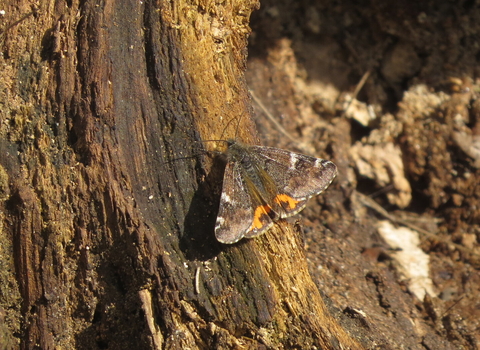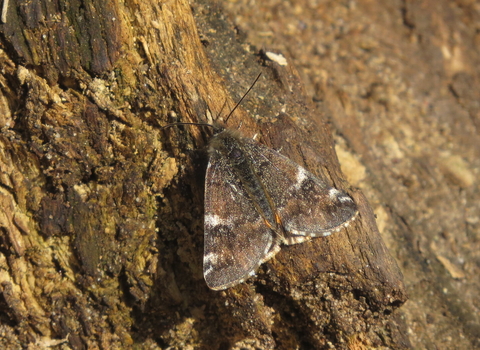
Orange underwing © Tom Hibbert

Orange underwing © Tom Hibbert
Orange underwing
This birch-loving moth can be seen flying on sunny days in early spring.
Enw gwyddonol
Archiearis partheniasPryd i'w gweld
Flies from March to AprilTop facts
Stats
Wingspan: 30-40mmCommon
Ynghylch
The orange underwing is one of the earliest day-flying moths to appear in spring, taking to the wing on sunny days in March and April. Their caterpillars feed on birch trees, so they're found on woodland edges, in sunny clearings, and in scrubby areas or heathlands with patches of birch. The moths often flutter around the very tops of the birch trees, though they do come down to the ground to drink and bask.Orange underwings spend the winter as a pupa attached to the bark of a tree, or dug in to rotting wood. The adult moths emerge in March and can be seen into April. They lay their eggs on birch twigs, with the eggs hatching in time for the caterpillars to feed on newly-grown catkins. In later spring, the growing caterpillars feed on the young birch leaves, instead. The caterpillars pupate around June and spend the rest of the year as a pupa.
What to look for
When seen flying around during the day, the orange underwing appears orange-brown. At rest, it shows brown forewings with some paler markings towards the outer half of the wing. The underwings are dark with bright orange markings.A similar species, the light orange underwing, can be difficult to separate from orange underwing without close inspection. However, the light orange underwing is scarcer, emerges a few weeks later in March, and prefers aspen trees.
